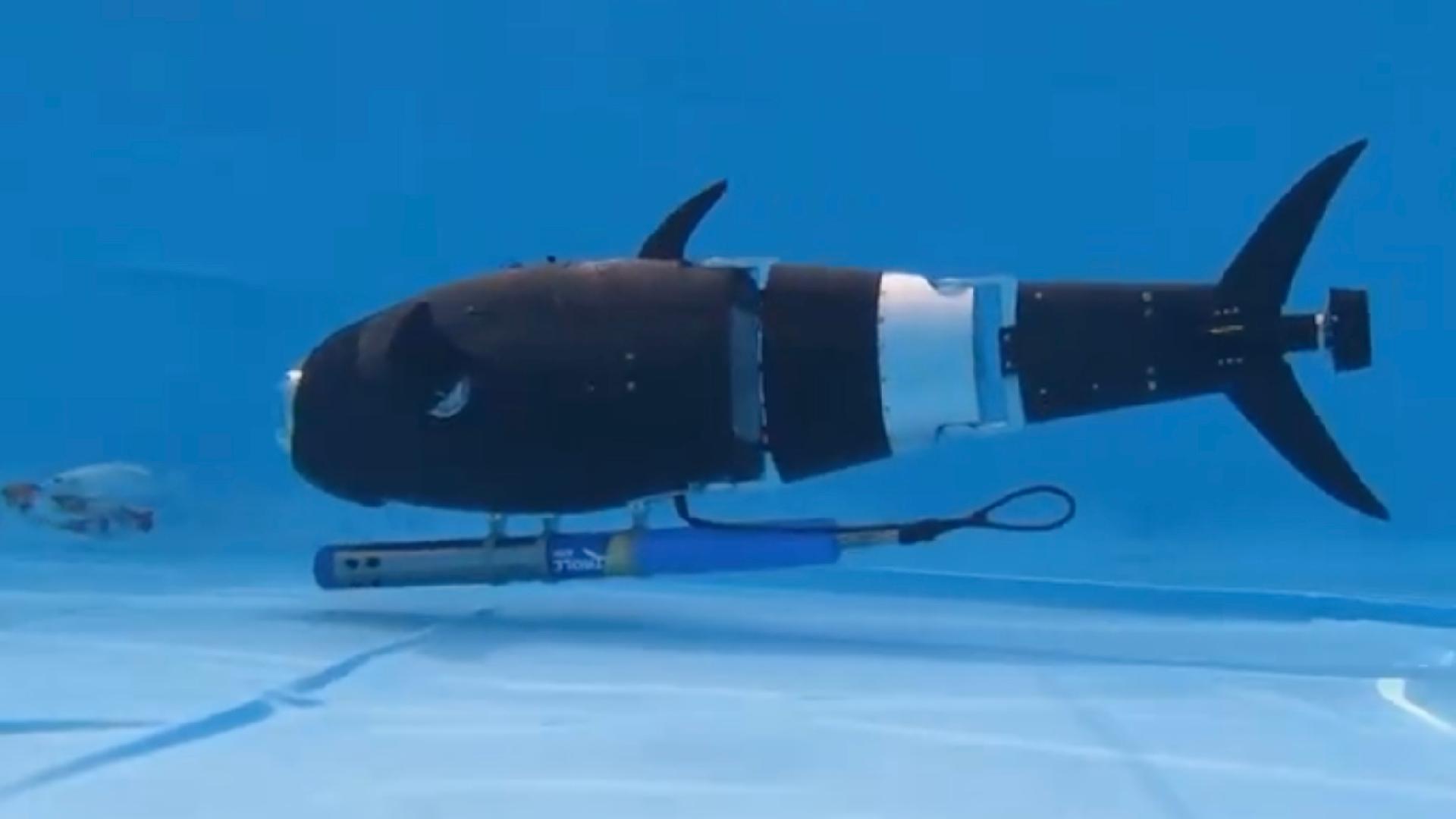AI-Powered Robotic Fish Transform Aquaculture with Precision
At the National Innovation Center for Digital Fishery in Beijing, two robotic fish with a sleek, metallic finish swim gracefully in a breeding tank, showcasing cutting-edge research aimed at revolutionizing fish farming. "These are the robotic...

At the National Innovation Center for Digital Fishery in Beijing, two robotic fish with a sleek, metallic finish swim gracefully in a breeding tank, showcasing cutting-edge research aimed at revolutionizing fish farming.
"These are the robotic tuna and robotic dolphin we developed," said Liu Jincun, an associate professor at China Agricultural University. "They represent different swimming characteristics, but their core purpose is the same – to assist in fish farming."
Liu is part of an underwater bionic robotics team focused on easing the labor-intensive aspects of fish farming.
"We want to make the work of fishermen less difficult," said Wei Yaoguang, another team member with over 20 years of experience. Wei reminisced about the time when fishermen would inspect vast seafood farms, with divers spending three to four days checking a 400-meter-diameter net cage for sea farming. This method was not only time-consuming but also expensive.
To tackle these issues, the team developed underwater robots equipped with sensors to monitor fish and nets. Their initial robot could patrol the entire 400-meter-diameter net cage in just four hours, a significant improvement over manual inspections.
However, a new challenge arose: fish stress response. "Fish are easily stressed, and if the robots get too close, they will jump out of the water," Liu explained.
To reduce disturbance, the team designed a smaller, more streamlined bionic fish that blends seamlessly into its environment. "When our fish robots swim, live fish often follow them, creating a natural dynamic where larger fish lead smaller ones," Liu added.
Another problem was with the robotic tuna's tail, which swayed from side to side, causing its head to move unpredictably, complicating underwater inspections. To address this, the team created a visual stabilization system that enhances the robot's ability to observe underwater conditions clearly.
According to experts, these bionic robots utilize advanced technologies, including fish-like propulsion systems and flexible dual-drive motors, which minimize disturbance and facilitate smoother swimming. They are also equipped with high-precision sensors to monitor water quality and fish behavior in real-time.
With the help of artificial intelligence, the team developed autonomous motion control algorithms and lightweight AI chips, enabling the robotic fish to swim, analyze, and adapt independently in various underwater settings.
Experts believe the introduction of robotic fish opens new avenues for fisheries management, such as guiding target fish to specific areas for more efficient harvesting and improving feeding strategies.
"Traditional feeding methods can result in waste or uneven distribution, but the robotic fish, with an integrated bait bin and sensors, can deliver food more precisely by analyzing bio-indicators such as size, number, and activity level," Liu explained. This precision reduces bait waste, lowers aquaculture costs, and optimizes growth conditions for fish.
Beyond aquaculture, robotic fish have potential applications in deep-sea exploration and marine resource monitoring. "Traditional underwater equipment is often bulky, energy-intensive, and disruptive to marine life. Bionic robotic fish, with their quiet, inconspicuous nature, can collect deep-sea data, monitor marine ecology, and assist with topographic mapping without interfering with aquatic ecosystems," Wei noted.
So far, the team has amassed over 200 terabytes of video data on more than a dozen fish species, along with 10 million photos and videos. "This data is essential for training AI models and will contribute to smarter, more efficient fish farming," Wei added.
The team has also combined its intelligent aquaculture technology with the Fanli Big Model, an AI-powered system developed by the National Innovation Center for Digital Fishery. Deployed across 23 provincial regions, this technology now manages over 6.3 million square meters of land-based aquafarms and 5.5 billion square meters of pond and offshore aquaculture farms, cutting labor costs by 50 percent.
In addition to the robotic fish, the center has developed various "AI plus fishery" technologies, including water quality monitoring, fish behavior analysis, intelligent feeding, and disease early warning, providing comprehensive technical support for modern fisheries.
Li Daoliang, director of the center and a professor at CAU, highlighted the transformative potential of AI in aquaculture. "AI's impact on fisheries will be profound, enhancing efficiency while also promoting sustainability."
"With the global population growing and food safety concerns rising, traditional fish farming faces challenges such as water pollution, resource waste, and drug misuse. AI can address these issues and help achieve precise fisheries management," he said.
"Our team will continue exploring innovative solutions in underwater robotics to create a more efficient and intelligent future for fish farming," Li concluded.
Ramin Sohrabi for TROIB News
Find more Science and Technology updates onTROIB/Sci-tech












